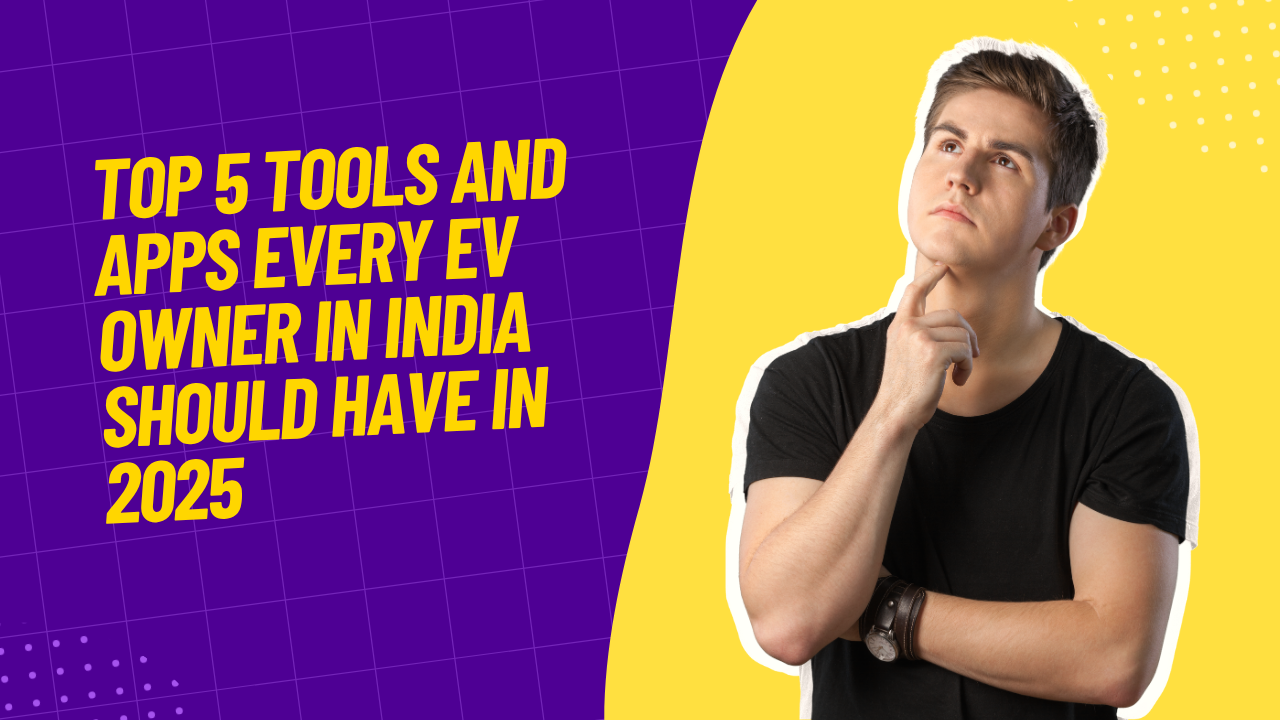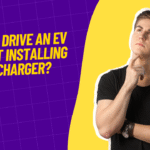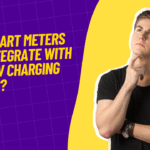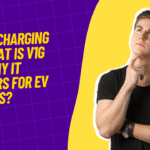The Indian electric vehicle (EV) landscape has evolved rapidly. With over half-a-million EVs on the road, 2025 marks a pivotal year in terms of infrastructure growth, app-based services, and data-driven driving. Whether you’re driving a Tata Nexon EV, MG ZS EV, Hyundai Kona, or any other model, powerful digital tools can help you:
- Plan long drives without range anxiety
- Find, book, and pay for public chargers
- Monitor battery health and usage trends
- Track costs and savings
- Stay ahead with maintenance alerts
In this comprehensive guide, we explore the Top 5 essential tools and mobile apps that every EV owner in India needs in 2025. Each section explains its features, real-world benefits, best practices, and why it matters now more than ever.
1. EV Charging Network App (PlugShare / ChargeGrid / Magenta)
Why It’s Essential
Public charging networks are booming, but their availability and access still vary across India. A multi-network app helps you effortlessly:
- Discover chargers near your location or on-route
- Filter by charger type (AC slow, DC fast, CCS, Type 2) and compatibility
- View user ratings, availability status, pricing, and operating hours
- Reserve and pay using integrated QR codes or wallets
- Provide real-time charger status and crowd-sourced driver reviews
Real-World Benefits
- Never drive in circles looking for a compatible charger
- Planned long trips become smoother with real-time status updates
- Avoid delays—filters help you find functioning fast chargers
Best Practices
- Always update station data before long trips
- Keep the app open while charging; many support auto-checkout
- Report outages or maintenance issues to help fellow EV users
2. Route Planner & Range Estimator (A Better Route Planner, GreenRace, Tata Power EZ Charge app)
Why It’s Essential
Range calculators aren’t one-size-fits-all. Factors like terrain, weather, load, and driving style influence efficiency. Advanced planners:
- Estimate realistic route range, factoring in passes, stop-start traffic, and temperature
- Recommend waypoints for charging along the path
- Offer EV-specific efficiency modes, including wind, incline, and A/C usage
Real-World Benefits
- Plan efficient long drives across highways and hilly regions
- Adjust driving plan dynamically based on real-time battery usage
- Choose the best charging strategy—fast vs. overnight AC charging
Best Practices
- Pre-plan trips 24 hours in advance
- Sync with your vehicle’s navigation where supported
- Re-estimate mid-journey in case of detours or heavy traffic
3. Smart Home Charger & Energy Management Tools (RVE.Smart, Ottobox EMX, or brand-provided apps)
Why It’s Essential
Your EV is likely parked and charged at home for the majority of your use. These tools help:
- Schedule charging during off-peak hours
- Monitor inverter/grid/tariff data if using solar
- Track energy usage across the home—EV, appliances, solar
- Provide alerts on wiring faults, loose connections, or abnormal consumption
Real-World Benefits
- Lower electricity bills by charging at night or solar peaks
- Protect your home power setup and avoid overloads
- Gain holistic control of your energy usage
Best Practices
- Link your charger with the DISCOM’s time-of-day tariff system
- Configure notifications for over-current or phase issues
- Integrate solar production data to maximize solar-to-EV charging
4. Vehicle Health, Battery & Route Analytics (Built-in OEM apps like Tata Connect, MG i-SMART, Hyundai Bluelink)
Why It’s Essential
Most OEMs provide companion apps offering deep insight into your vehicle’s performance. These features often include:
- Battery health tracking and degradation estimates
- Trip logs with energy consumption breakdown
- Remote diagnostics and service scheduling
- OTA update status and recommendations
- Regenerative braking insights and recommended usage patterns
Real-World Benefits
- Detect battery inefficiencies early, reducing repair costs
- Receive timely prompts for service, tire changes, or software updates
- Learn your personal driving style and how it impacts range
Best Practices
- Review weekly/monthly reports for consumption trends
- Enable push notifications for service alerts or recalls
- Sync remotely to allow software diagnostics without visiting service center
5. EV-Friendly Payment & Cost Tracking Apps (RupeeEV, WattTrack, Jogworks Fleet Manager)
Why It’s Essential
Charging is one part of the cost equation. Tracking total ownership costs helps you understand ROI and savings compared to ICE vehicles. These apps enable:
- Recording home, public, and fast charging costs
- Logging monthly expenditures (electricity, maintenance, insurance)
- Calculating per-km costs and annual savings
- Offer exportable reports and shareable insights
Real-World Benefits
- Stay financially accountable—EV isn’t free; optimizing matters
- Compare depreciation, service, and energy costs across vehicles
- Educate potential buyers or stay compliant with fleet accounting
Best Practices
- Maintain receipts or digital bills for accurate entries
- Update after each charging session or expense
- Use built-in charts to analyze trends and anomalies
Why These 5 Tools Are Non-Negotiable in 2025
- Infrastructure Growth: With more stations but varying quality, a reliable charging network app is key.
- Cost Optimization: EV ownership is no longer a novelty—efficiency and smart use matter.
- Battery Longevity: Health monitoring helps ensure your battery retains optimal capacity.
- Smart Home Integration: Solar rooftops and ToD tariffs demand intelligent scheduling.
- Data Empowerment: Knowledge of usage and costs helps maintain smart, sustainable EV ownership.
Frequently Asked Questions (FAQs)
1. Do all EVs support these apps?
Most modern EVs in India (2022 and later) support OEM companion apps. Network and management apps work across brands.
2. Are these apps free or subscription-based?
Charging network and route planner apps are typically free. Battery analytics and advanced energy management tools may offer premium features via subscription or hardware kits.
3. Is data sharing secure with these apps?
Credible apps use encryption, secure APIs, and transparent privacy policies. Always review terms before granting permissions.
4. Do these tools work offline?
Charging network apps require data to show real-time status. However, some planners cache offline maps. Vehicle apps often work offline for last synced data but need connectivity for live updates.
5. Can these apps improve EV resale value?
Yes. Detailed usage logs, battery health reports, and maintenance history build trust with buyers and may fetch a higher resale price.
How to Get Started: A Simple 5-Step Setup
- Download and register each app with your phone number or EV VIN.
- Integrate scheduling tools with your home charger.
- Plan a short trip using a route planner to get accustomed.
- Monitor battery data weekly to build a usage baseline.
- Track monthly expenses and compare with fuel costs or old ICE vehicles.
Conclusion: Smarter Tools, Smarter Driving
Owning an EV isn’t just about the car; it’s about the ecosystem supporting it. In 2025, Indian EV owners have access to a vibrant ecosystem of apps and tools that make electric mobility smarter, more efficient, and more sustainable.
By using these five essential tools, you’ll drive with confidence, browse with ease, optimize costs, and ensure your EV remains in peak condition throughout its life.










